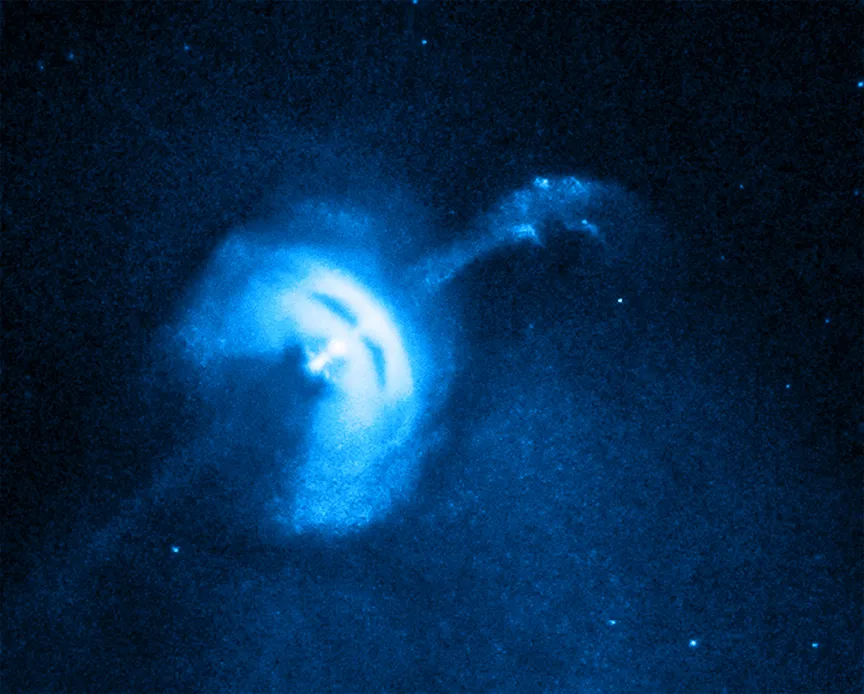The detection of gravitational waves by LIGO (the Laser Interferometer Gravitational-Wave Observatory) has transformed astronomy. This sensitive instrument, which uses lasers in long tunnels to detect tiny ripples in space, has opened up a new way of looking at the Universe, and revealed the dramatic effects of merging black holes and neutron stars.
Yet there are other ways of searching for gravitational waves that may have effects as profound as that of LIGO, and a recent paper covers the side-effects of one such search.
NANOGrav uses radio telescopes at Green Bank in West Virginia and the famous Arecibo dish in Puerto Rico.
Read more from Chris Lintott:
- How do stars form?
- Do spiral protoplanetary discs mean exoplanets in orbit?
- Speeding star reveals the secrets of the Milky Way
Rather than looking for gravitational waves directly, they make precise measurements of signals from dozens of millisecond pulsars, each of which spins thousands of times a second. The aim is to look out for the signs of a passing gravitational wave.
Interferometers such as LIGO, and its European sibling VIRGO, will only ever be sensitive to gravitational waves with short wavelengths, such as those caused by
the merging of relatively puny black holes, each perhaps tens of times the mass of the Sun.
If the supermassive black holes that lurk at the centres of galaxies, including our Milky Way, merge along with the galaxies that host them, then the waves they produce will pass through Earthbound detectors unsuspected.
Hence NANOGrav and the handful of projects like it scattered around the world.
If gravitational waves pass between us here on Earth and the pulsars the astronomers are watching, then the timing of their signals should be subtly altered.
Watch enough pulsars carefully, and you might be able to see the fabric of the cosmos rippling in your data.
Not that the pulsars aren’t very interesting in themselves. Millisecond pulsars are believed to have sped up to their present rapid rates of spin because of an interaction with a companion, which makes the question of whether there are any planets in such a system particularly interesting.

A handful of pulsars are known to have planetary-sized companions, detected by the variation of the pulsar timing caused by the satellite’s gravitational pull.
As it’s assumed no normal planet could have survived the catastrophic supernova explosion which produces a pulsar in the first place, their origin is somewhat mysterious.
So, looking for more pulsar planets in NANOGrav data seems like a great idea, and the team carefully sorted through their trove of data before coming up with, well, absolutely nothing.
None of the pulsars in the NANOGrav sample has planets going around it, and that’s somewhat surprising. The data is sensitive enough that even things the size of the Moon, if suitably close to their parent pulsar, should have shown up.
The absence of planets in this sample tells us that such objects must be pretty rare after all – and that further work finding and monitoring millisecond pulsars is needed for the purposes of both planet detection and gravitational wave hunting.
Chris Lintott was reading The NANOGrav 11-year Data Set: Constraints on Planetary Masses Around 45 Millisecond Pulsars by EA Behrens et al. Read it online here.
This article originally appeared in the February 2020 issue of BBC Sky at Night Magazine.
